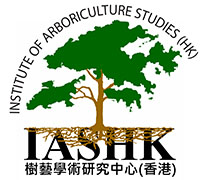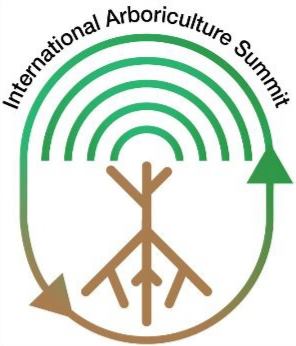
Announcing the 12th annual International Arboriculture Summit in Hong Kong this November
November 13-15, 2019
Raising the Qualifications: New Technologies for Urban Tree Management
Venue: Institute of Vocational Education (IVE), Kwai Chung, Hong Kong
Hosted by: the Institute of Arboriculture Studies – HK (IASHK)
Co-Organiser: the Institute of Vocational Education (IVE)
Countdown to the Summit
Be sure to register early!
Who Should Attend?
Each year, we are pleased to have attendees from all around the Asia region and beyond. This includes individuals from both government and private sectors – tree and forest consultants, landscape architects, city planners, environmental managers of the construction industry, forest researchers, arboriculture educators, landscapers, private business owners, arborists, urban foresters, and government staff of various levels and countries.
If trees are a part of your passion or career, you should attend.
What to Expect at the Summit
The summit will primarily consist of conference hall lectures. Lectures will be supported by powerpoint slides. There will also be plenty of time for question and answer as well as networking opportunities during breaks. For field training, groups may go outside to view and discuss trees on the campus. IVE has a few hundred trees, so the lecturers will have many real examples for discussion and interaction.
IASHK Mission
Like a tree, Arboriculture methods are constantly changing and growing. Researchers, educators, and experts from around the world work together to test new theories and new practices and to disseminate these new findings to arborists around the world. The purpose of the International Arboriculture Summit is to help present those new practices and technology together with the core fundamentals of arboriculture to the tree care professionals within our region, so that we all may grow together in our own understanding and practice.
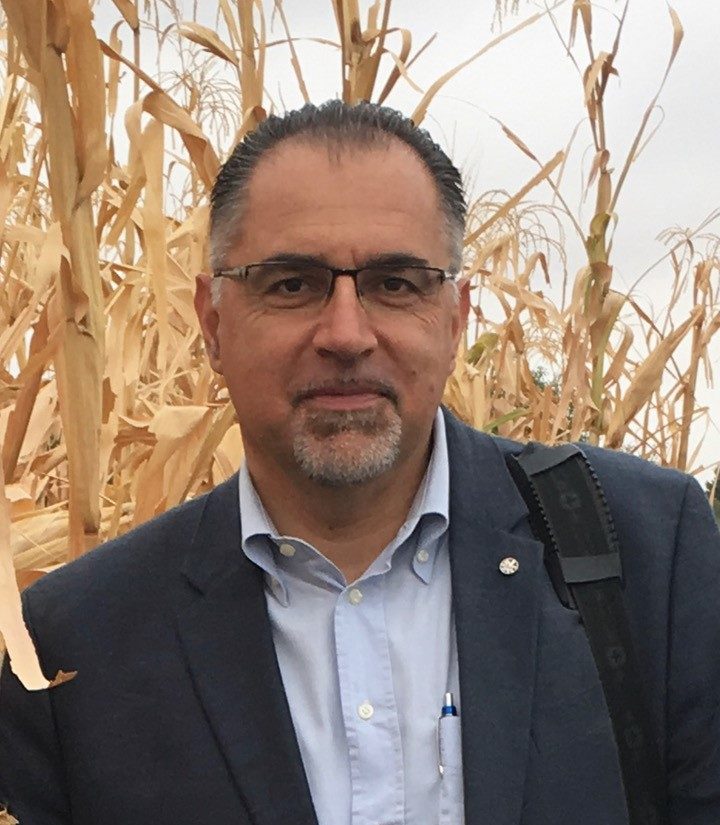
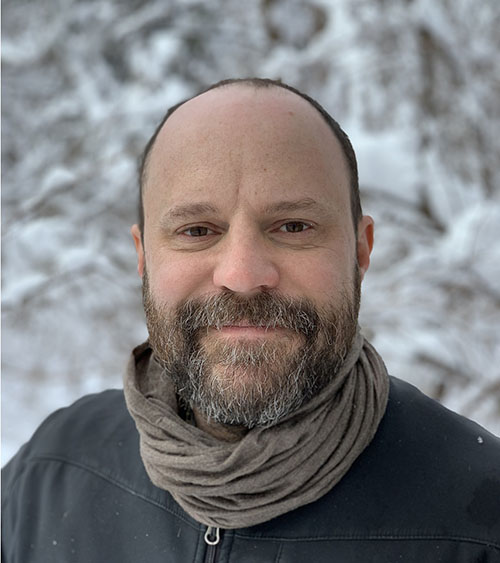

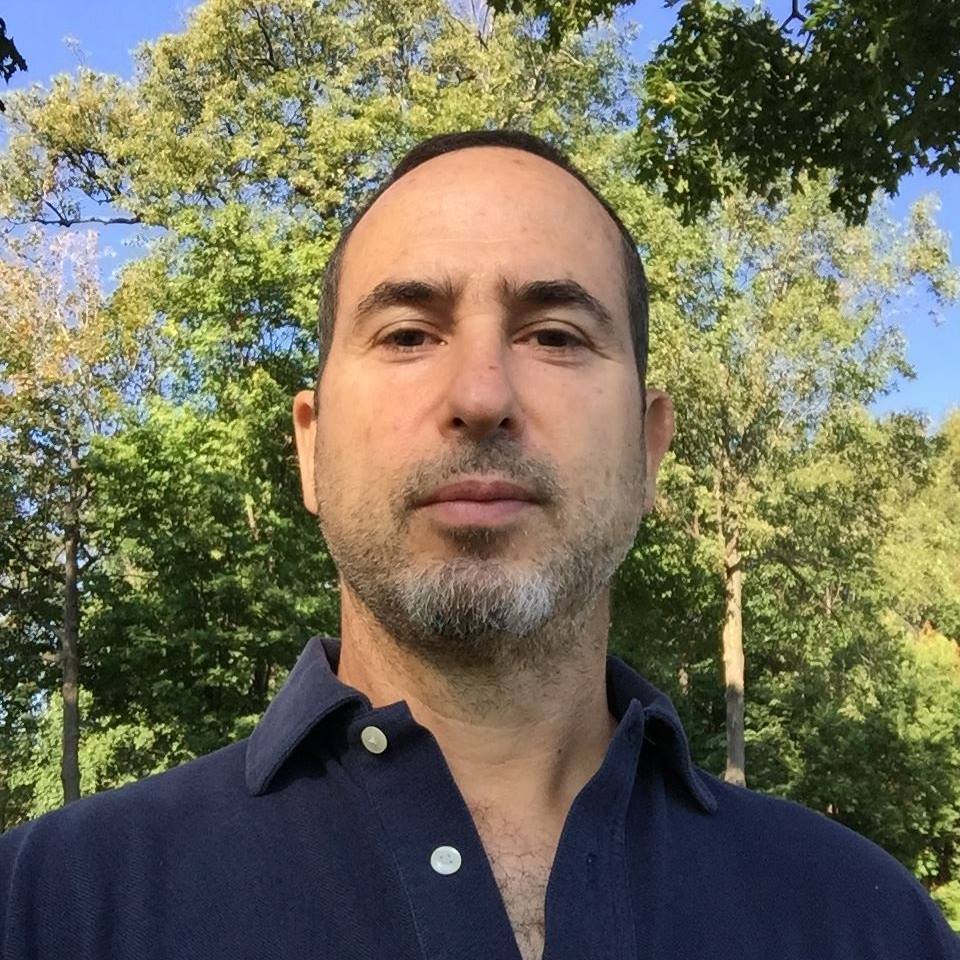
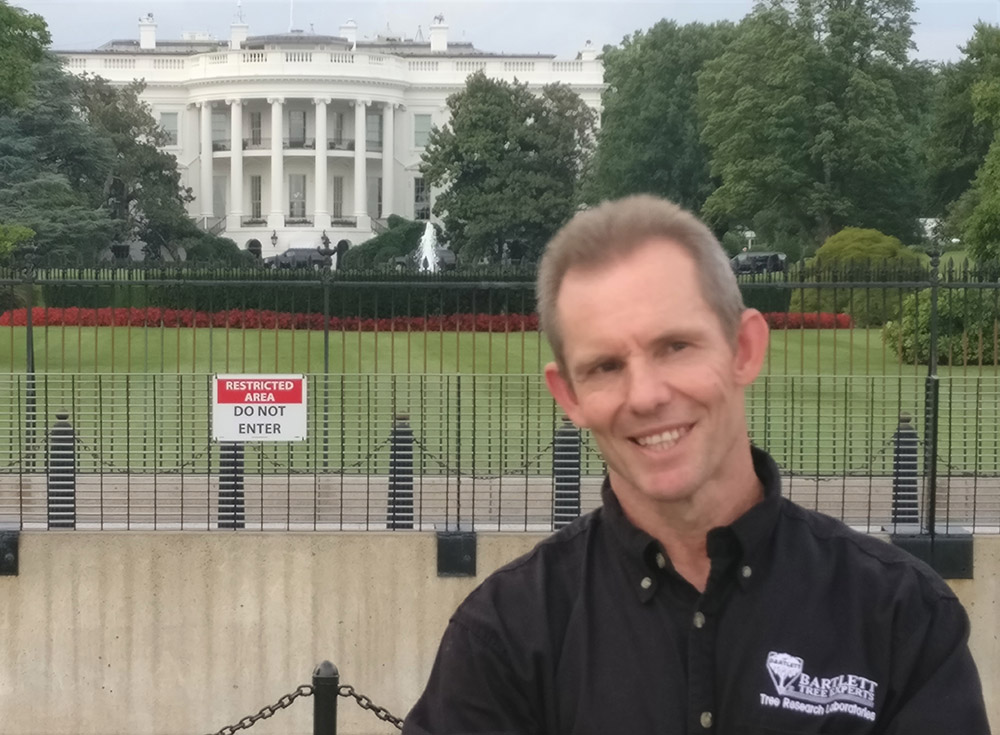
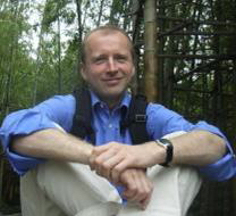
2019 Educators
Dr. Francesco Ferrini PhD – Full Professor at the Department of Agriculture, Food, Environmental and Forestry Sciences – University of Florence (Italy); Dean of the School of Agriculture at the University of Florence, President of the Italian Society of Arboriculture from 2005 to 2011, Member of the Board of the International Society of Arboriculture from all over the world from 2005 to 2016, Senior Director of the scientific magazine Advances in Horticultural Sciences, Associate Editor of the Arboriculture & Urban Forestry, Associate Editor of Urban Forest & Urban Greening, Editor of the Handbook of Urban Forestry published by Routledge/Taylor & Francis Group
Member of Educational Goods and Services Committee of the International Society of Arboriculture from 2007 to 2011. Member of the Science and Research Committee of the International Society of Arboriculture from 2006 to 2011. Chairman of Conference Program Committee of the International Society of Arboriculture from 2008 to 2011
From 1990 he has published more than 300 scientific and technical papers in Italian and in English in international referred and nationwide journals. In 2010 he has been the recipient of International L.C. Chadwick Award for Arboricultural Research Recipient: The L.C. Chadwick award is granted to individuals to recognize research that has contributed valuable information to arboriculture. Classes taught: Arboriculture and Urban Forestry (master’s degree in landscape architecture); Planning and managing green areas (Bachelor’s degree in Science and Technology for green areas and landscape management); Methodologies and tools to climate change effects mitigation in the urban environment (Master’s degree in Sustainable management of Agroecosystems)
Frank Rinn, inventor of the RESISTOGRAPH® and ARBOTOM® is world famous as an instructor on tree inspection and can help to make you a more expert arborist. Frank owns RINNTECH, a company that develops equipment for dendrochronology, tree and timber inspection since 1988.
Frank invented and developed different methods, machines, and computer programs for various applications in tree-ring analysis, dendrochronology, tree, and timber inspection, such as resistance drilling, sonic tree tomography & root-plate detection, as well as wood surface density analysis. He was granted several national and international patents and trademarks such as on high resolution and high-precision resistance drilling (RESISTOGRAPH®) and sonic tomography (ARBOTOM®). For his inventions and developments, he received several research and innovation awards (1989, 1992, 1997, 1998, 2004, and 2012). Besides managing RINNTECH (manufacturing, selling, and training), Frank also works as a court registered expert, inspecting trees and timber (structures). In addition, he lectures and has published several dozen papers on various topics.
Since 2001, he serves as voluntary Executive Director of ISA Germany and is on the ISA Tree-Risk Panel of Experts and contributes to the corresponding BMP. From 2011 to 2013 he served on the ISA Board of Directors.
Dr. Eric North received his doctorate from the University of Minnesota in urban tree biometrics and tree ring analysis. Dr. North’s research has investigated tree growth response in urban environments, the impacts of construction damage on trees, volunteer tree inventories, citizen science, and storm damage of city trees. Currently Dr. North is a faculty member at the University of Nebraska-Lincoln, where is creating a new undergraduate degree program in Urban Forestry and Arboriculture, teaching courses in dendrology, tree biology, arboriculture, and urban forestry management. Dr. North also works closely with the International Society of Arboriculture on the Credentialing Council, the Science and Research Committee, and as the President of the Arboriculture Research and Education Academy.
Dr Glynn Percival manages the UK and Ireland Bartlett Tree Research and Diagnostic Laboratory based at the University of Reading. He is the author of over 100 scientific papers, magazine articles and book chapters. In addition Dr Percival is on the editorial board for Arboriculture and Urban Forestry and Urban Forestry Urban Greening and is the co-editor of the proceedings of the Trees, People and Built Environment Conference, published by the Forestry Commission. Reading University made Dr Percival an honorary visiting research fellow, citing his valuable contributions within the Plant Science Department and the University. Dr Percival is also a visiting lecturer at the Kew Royal Botanic Gardens and was awarded the prestigious Arboricultural Association Award for Research and Education in 2017. Dr Percival is actively involved in managing urban and rural landscapes for the Royal Households
David S. Restrepo is a Colombian-French arboriculture lecturer-tree architecture popularizer. He is an ISA Certified Arborist-Tree Risk Assessment Qualified (TRAQ), having passed twice successfully the French Tree Climbing Arborist Certificate of Specialization “Pruning and Tree Care” (1997–98, 2009). He studied “Tree Architecture and Development Mode” with Jeanne Millet Ph.D. at the University of Montreal, and has organized and attended intensive tree architecture workshops with Francis Hallé, Christophe Drénou and Jeanne Millet. He is the web master of the specialized site on tree architecture:
David is a crew member of the Tree and Woods Service of the City of Paris, currently
residing in Montreal on a sabbatical leave. He is the current president of ISA Quebec Chapter (SIAQ) (2018–2019), International Society of Arboriculture-Quebec, and was secretary of the Mexican Arboriculture Association (AMA) (2013–2015) and ISA component executive representing Mexico for several years in ISA’s leadership workshops. He negotiated with ISA the transition for the Mexican Arboriculture Association to become a full ISA chapter.
David S. Restrepo is an active member and a moderator-administrator of the rapidly rising in popularity Latin American Institute of Arboriculture (INLARBOR). Recently, on march the 7th, 2019, David S. Restrepo gave a series of lectures on tree architecture during ISA Norwegian chapter Norsk Trepleieforum’s annual convention in Bergen, Norway, entitled ARBORITECTURE: The Application of Tree Architecture in the Management of Urban Trees – A Practical Approach Related to Pruning”. Sharing the podium next morning was arboriculture lecturer extraordinaire Duncan Slater.
An article reviewing Restrepo’s lecture was published in Norse in the Norwegian magazine park & anlegg (Trepleie og skjøtsel 03 2019) “ARBORITECTURE: i Norsk” by Andreas Løvold, Arborist-Chief Research Technician, of the Oslo Botanical Garden’s Arboretum. 2018 La Cultura del Arbol, the official magazine for the Spanish Arboriculture Association, AEA, published an article by David S. Restrepo entitled “Tree Architecture vs Tree Structure, a Practical Approach Related to Pruning”.
Dr. Telewski was born in Fort Lee, New Jersey and earned his B.A. with a double major in Biology and Chemistry from Montclair State College in 1977, his M.S. in Botany from Ohio University in 1980, and his Ph.D. in Tree Physiology from Wake Forest University in 1983. Both his Masters and Doctoral research focused on the influence of wind on tree biomechanics, growth and development. After graduating from Wake Forest, Dr. Telewski accepted the position of Assistant Professor in the Laboratory of Tree Ring Research at the University of Arizona from 1983 to 1990. In 1990 he moved to Buffalo, NY to take over the duties of Director of the Buffalo and Erie County Botanical Gardens and Associate Professor of Biology at the State University of New York at Buffalo. In January, 1993 Dr. Telewski moved to his current position at Michigan State University as Curator of the W. J. Beal Botanical Garden and Campus Arboretum, and Assistant Professor in the Department of Botany and Plant Pathology. Currently he is Professor of Plant Biology and Director of the W. J. Beal Botanical Garden and Campus Arboretum. Dr. Telewski has published over 50 peer reviewed articles and book chapters on tree physiology, ecology, dendrochronology, and tree biomechanics. He is internationally recognized for his work in tree biomechanics and tree growth responses to wind and has given numerous talks nationally and internationally to chapters of the International Society of Arboriculture, and nursery and landscape associations. These talks have an emphasis on tree growth in response to wind, tree biomechanics and hazard trees, proper planting practices, girdling roots, tree protection during construction, and the influence of root damage due to trenching on tree growth.
2019 Schedule, Topics & Abstracts
Here is this year’s schedule, topics, abstracts. To view the abstract for a specific topic, click on the “+” symbol next to the topic title.
Wednesday, November 13, 2019
Urban forestry is a discipline and term that originated in the 60’s in Canada that was later developed mainly in the United States and progressively became established in the 90’s in Europe.
The origin, however, can be dated back to 1924, when the First Tree Shade Conference was held in Stamford, Connecticut. Today, the global state of art of urban forestry is not only very complex but undoubtedly characterized by mutual influences. Countries like China and some in Southeast Asia are establishing themselves as centers of research and implementation of urban forests, not to mention South America.
The discipline of urban forestry has quickly established itself in just over 40 years, mainly as a result of the urbanization process involving populations at global level. During these past years, and especially in the last two decades, urban forestry has further evolved thanks to interdisciplinary approaches that fostered knowledge of urban ecosystems and how these are able to provide, through goods and services, a better quality of life in cities. In this perspective, the term ‘urban forestry’ is increasingly associated with the terms ‘ecosystem services’ (ES), ‘green infrastructure’ (GI), ‘nature-based solutions’ (NBS) and ‘human health and well-being’ (Well-being).
The evolution of urban forestry, both in terms of content and implementation typologies, has been favored by the “cultural contamination” that has taken place within knowledge networks such as IUFRO with the European Forum on Urban Forestry, COST Actions, FAO with Selvimed WG UPF, the Asia-Pacific Urban Forestry Meeting, and technical-scientific organizations such as the International Society of Arboriculture.
The aim of this presentation is to provide an update on the research and progress of the discipline of Urban Forestry, focusing specifically on the benefits of urban forests (e.g., climate change mitigation, health benefits, etc.). Then the importance of UF in planning the city of the future will be discussed
Long before climate change debates went viral, European regulations required the preservation of natural habitats as long as possible because biological diversity was identified as a pre-requisite for a long term stability of urban forests – as a central part of the urban environment. But, keeping trees with obvious defects is not easy to defend. It requires a basic understanding of the major factors of tree biomechanics and the ability to explain such decision about decayed trees.
The current approach of tree morphology in arboriculture is based on the notions of growth and form, drastically limiting the understanding and comprehension of trees. The application of tree architecture in arboriculture brings novelty in the way arborists approach the management of urban trees, based on the architecture of trees and their mode of development.
This lecture on tree architecture fundamentals will guide participants step by step through the basics of this indispensable science and discipline, addressing its complex terminology in a comprehensible and accessible way so that it can be assimilated and applied by participants in their respective fields. It will include a retrospective of tree architecture and will go into detail into its basic aspects including morphological differentiation of axes: orthotropy and plagiotropy, ramification and reiteration, hierarchy and polyarchy, life span of axes, ontogenetic stages, architectural unit, architectural metamorphosis, minimal architectural unit, development by gigantism and development by reiteration, potential immortality, tree succession and the different types of forks.
Currently, more than half of the world’s population lives in an urban environment. Urbanization has been both a gradual and cyclical process since the beginning of human civilization. However, the rate of urbanization increased dramatically during the industrial revolution and evolved into “overflowing settlements” in the second part of the Twentieth Century. During this time, a post-World War II population boom in developing countries was largely absorbed by the cities. As a result, more than 50% of the world population now lives in the urban areas. This percentage is higher than 70% in Europe and this is why Arboriculture and Urban forestry must have important roles in the management of urbanization and establishment of habitable cities. All the greenspaces, from flowerbeds to periurban (outlying) forests offer a “concept of nature,” and fulfill a paramount role in improving quality of life. Have you ever imagined what the world would be like without trees? I have not and can’t even think about it!
Greenspaces help cities to reach the minimal thresholds for human well-being. We desperately need them in our cities. Many view greenspaces simply as an outlet for recreation and don’t even think about what they can offer to improve citizens’ quality of life. These benefits have been the subject of numerous research projects, including European COST studies, the Horizon 2020 Programme for Research and Innovation, LIFE Programme, etc. Developing countries will also play an increasingly important role in global environmental issues as their major cities are growing much faster and often in a less sustainable way than those in the most developed countries.
As for the plants to be used in the future green areas increased emphasis should be placed on selection and/or breeding trees for environmental stress tolerance, such as drought and temperature stress and won’t compete with the built environment.
Tolerance or resistance of trees to environmental stress will result in healthier trees that will not only be able to resist disease but will notably improve the quality of the urban environment. It is my opinion that the main strategy for protecting trees from the adverse effects of climate change and for maximizing their benefits on the urban environment and on human well-being, consists in developing long term management and replacement programs which will ensure a balanced age range and a good tree health. Decision makers, policy makers, city planners as well as stakeholders should be aware of the impacts that global change will have in our life and the paramount importance of urban vegetation to mitigate these impacts and to improve the quality of our cities. To this regard it’s important to remember that FAO is an old but mentally young organization with great opportunities, which will determine a clear sense of future direction and focus. We are living in a rapidly changing time and FAO has big opportunities and competitive advantages to improve its leader position in the field of Arboriculture and Urban Forestry thus having significant impact on our urban environment (and not only) over the next 20‐30 years. Looking at political, economic, technological, social, lifestyle, demographic, competitive, regulatory and broad philanthropic trends, we can determine which changes are opportunities for us (for example, opportunities to grow) and which could be threats to us in some way (trends that can keep us from being successful).
The presentation will try to give a short overview what we know about:
- Perception of «green»
- Green areas & mental/physical wellbeing
- Green areas and pollution
- Green areas to mitigate the Urban Heat Island
- Green areas and stormwater management
- Green areas and commercial district
- Green and social equity
- A new approach to Urban forestry
- Plant selection
- Urban forest as a food source
- Take home message
The comprehension of tree development is the great contribution that tree architecture brings to the study of tree morphology. The architectural models of trees, introduced by Francis Hallé and Roelof Oldeman, represent the development strategies genetically inherent of young trees until their sexual maturity. Usually represented in their final stage, architectural models are the result of a dynamic process, a sequence of development.
This lecture will explore the architectural characteristics retained in order to define architectural models, and will guide participants through a practical comprehensible classification of architectural models according to their degree of differentiation of axes.
Even though tree architectural models are still absent from the current understanding and comprehension of tree morphology in arboriculture, their relatively recent accessibility through the study of tree architecture in temperate zones has undeniably provoked a strong impact on the arboriculture community.
This lecture aims to demystify architectural models and will also address the relatively recent concept of nested architectural models and nested architectural units.
In urban and suburban landscapes, trees grow in close proximity to buildings and infrastructure consequently, the potential for conflict is great. Excavating and trenching are common activities on construction sites for a variety of purposes including the creation of basements, foundations, footers for walls, gas and electric pipes and irrigation systems. Similarly, the process of developing land for buildings and infrastructure can be devastating to existing trees caused by loss of soil structure, quality and fertility. Aims of this talk will focus on use of soil remediation measures (air-spading, vertical mulching, radial trenching) that can be used to reverse symptoms of mature tree decline caused by building/construction damage. In addition recent developments in long term soil decompaction technology such as the addition of biochar, worms and nitrogen fixing green manures under tree canopies will be highlighted. The influence of these practices on soil physical, chemical and biological properties will be emphasised.
The tree literature is filled with many different names for types of wood. For example, juvenile wood, mature wood, sap wood, heart wood, late wood, early wood, reaction wood, compression wood, tension wood and flexure wood. This lecture will help clarify these terms and how they impact tree stability, structure and function.
Thursday, November 14, 2019
A detailed analysis of the two major VTA safety rules (t/R>1/3 and H/D<50) as well as the SIA breakage safety evaluation shows that these measures are either inappropriate, not applicable or wrong for the typical urban tree to be evaluated in terms of safety.
Arborists prune, drill, and inject trees on a daily basis using industry guidelines and techniques to improve the function of trees, but what happens inside the tree? How do trees biologically respond to pruning? What are the impacts to water and chemical movement with changes in weather? Understanding the concepts of tree biology can help arborists better communicate to home-owners why we prune and care for trees the way we do. We will explore wood production, wound response, water movement, and how trees build themselves into some of the largest, longest-lived organisms on the plant. Research science of tree biology will be used to explain how tree respond to arborists and the environment. This presentation will cover tree biology from an applied perspective of a working arborist.
Trees planted in urban or amenity landscapes (streets, town centres, car parks etc.) face a number of stresses (drought, root de-oxygenation, salinity) that singly or in combination can have devasting impacts on survival of not only newly planted trees but well established mature trees. These symptoms become manifest as leaves yellowing and/or crown/branch die-back, that are visible indicators arborists interpret to assess tree vitality. Visual observations can be very subjective as they are based on human knowledge and interpretation which differs between individuals. Consequently health evaluations can differ markedly between assessors. Assessing the health of trees can be quantified using a suite of non-destructive and non-invasive such as leaf chlorophyll fluorescence (CF), leaf chlorophyll content, root/stem/leaf electrolyte leakage, twig starch analysis and leaf water potential. Aims of this talk are to highlight the practical value of these physiological tests to identify low vigour or damaged plants prior to the onset of visible deterioration.
Trees alter their wood properties and form in response to their mechanical environment in order to maintain their structure in response to gravity, wind and other mechanical loads. This lecture will introduce the attendee to the basics of tree biomechanics and how trees modify their growth to maximize their growth to ensure survival under mechanical loads.
Even cities with dedicated forestry departments often have significant budgetary constraints when faced with removal and replanting of trees due to losses from invasive pests like emerald ash borer (EAB). Community residents, as volunteers, can be a valuable resource for increasing the capacity and success of urban forestry. Through training and technical assistance programs community volunteers are capable of urban forestry contributions beyond Arbor Day planting events. The Community Engagement and Preparedness (CEP) volunteer program was created by the University of Minnesota, Urban Forestry Outreach, Research & Extension team to assess potential community tree losses, due to infestations of emerald ash borer, through the creation of tree inventories. The CEP program worked with 14 different Minnesota communities ranging in population from 700 residents to around 110,000 residents to inventory, measure, and condition rate trees. The program objective was to provide accurate information regarding risk of trees losses due to EAB using volunteer collected data. The research objectives were to: (1) gain insight into methods of training and technical assistance of volunteers for more complex tasks such as tree inventory and condition rating, and (2) evaluate the practical value of volunteer collected inventory data when comparing volunteer data to professionally collected data using iTree Streets valuation. To address the research objectives, the CEP program provided volunteer training, technical assistance, and data analysis in order to achieve the community tree inventories of both public and private lands. Training methods and technical support were developed for the first six communities and relied heavily on initial training with less reliance on technical assistance. The second group of eight communities had increased technical assistance during the volunteer inventory process. University of Minnesota researchers trained in tree identification, tree measurements, and condition rating collected data on a subsample of volunteer inventoried trees to assess the accuracy of volunteer collected data.
Tree architecture analyses provide pertinent data to practitioners in order to perform an architectural diagnosis. This lecture will guide participants step by step how to read the data provided by researchers and how to perform a basic architectural diagnosis as outlined in Jeanne Millet’s diagnosis guide and Christophe Drénou’s ARCHI method.
In recent years, Christophe Drénou’s ARCHI method: Architectural diagnosis of the vitality of trees, has taken the arboriculture community by storm, regarded as a major contribution to the application of tree architecture in the management of arboreal patrimony. This lecture will guide participants through Drénou’s ARCHI method in a comprehensible accessible way.
Even though the ARCHI method provides specific keys by species, its principles based on the nature of substitute shoots, either orthotropic, plagiotropic or ageotropic, can be extrapolated to many urban trees. The ARCHI method considers two distinct images: A sequential image, corresponding to an ontogenetic diagnosis, considering inherent ontogenetic stages of development, and, a reactive image, corresponding to a physiological diagnosis, considering physiological states induced by the environment, taking into account both mortality and tree reaction.
The ARCHI method enables arborists to understand stress as a pause from a natural state within the inherent sequence of development, leading to physiological states induced by the surrounding environment.
This lecture will describe in detail the 6 different ARCHI types:
Normalcy: Healthy tree presenting normal architecture. Stress: Stressed tree presenting deviations from normalcy. Resilience: Resilient tree returning to normalcy.
Crown retrenchment: Tree presenting a process of construction of a new crown below or nested within the original crown.
Entrenchment: Tree entrenched presenting uppermost crown decline and unaltered lower branches.
Irreversible decline: Declining tree having reached a point of no-return to normalcy.
Tree architecture analyses provide pertinent data to practitioners in order to perform an architectural diagnosis. This lecture will guide participants step by step how to read the data provided by researchers and how to perform a basic architectural diagnosis as outlined in Jeanne Millet’s diagnosis guide and Christophe Drénou’s ARCHI method.
In recent years, Christophe Drénou’s ARCHI method: Architectural diagnosis of the vitality of trees, has taken the arboriculture community by storm, regarded as a major contribution to the application of tree architecture in the management of arboreal patrimony. This lecture will guide participants through Drénou’s ARCHI method in a comprehensible accessible way.
Even though the ARCHI method provides specific keys by species, its principles based on the nature of substitute shoots, either orthotropic, plagiotropic or ageotropic, can be extrapolated to many urban trees. The ARCHI method considers two distinct images: A sequential image, corresponding to an ontogenetic diagnosis, considering inherent ontogenetic stages of development, and, a reactive image, corresponding to a physiological diagnosis, considering physiological states induced by the environment, taking into account both mortality and tree reaction.
The ARCHI method enables arborists to understand stress as a pause from a natural state within the inherent sequence of development, leading to physiological states induced by the surrounding environment.
This lecture will describe in detail the 6 different ARCHI types:
Normalcy: Healthy tree presenting normal architecture. Stress: Stressed tree presenting deviations from normalcy. Resilience: Resilient tree returning to normalcy.
Crown retrenchment: Tree presenting a process of construction of a new crown below or nested within the original crown.
Entrenchment: Tree entrenched presenting uppermost crown decline and unaltered lower branches.
Irreversible decline: Declining tree having reached a point of no-return to normalcy.
The debate around the exclusive use of native plants for the new projects or, however, their priority toward the exotic species, sometimes assumes tones which can be called “botanical chauvinism”. Anyway, regarding the term “native” and its real meaning there is a lack of clarity; it is a “fluid” term that needs to be related to a precise context to be fully understood.
When planning new green spaces in the urban environment is necessary to always remember that the today’s urban environment is very different from the natural environment where the species evolved out and that, sometimes, exotic species might provide better performances than species which, though native from a specific area, could have serious difficulty to thrive in our cities where the climatic conditions and soil characteristics are completely different. Native plants don’t necessarily survive these conditions any better than exotics. Besides we should answer some more questions when we have to choose the species to be planted:
- Which trees should be planted in order to maximize the carbon sequestration and pollutants removal?
- Which species native and/or exotic can better face the temperature increase foreseen for the next decades?
- Can the drought tolerance of certain species be increased through better management techniques?
- How the interaction between the different species will change in the future?
Based on these questions the use of exotic species shouldn’t be excluded a priori but, more simply, once their potentiality for new plantings has been evaluated by comparing it with that of native species, they can be introduced where they can maximize the benefits in terms of CO2 sequestration and pollutant removal. On the other hand, it should be highlighted that their excessive use must not end in a sort of “vegetal globalization”, at the expense of the native species of a certain area.
So, it really doesn’t matter if a tree is native or non-native. What’s important is whether the tree’s characteristics and performance are a good fit with where we plant it. Native trees where in the place where we now live before the man, which means that many native trees will not fare well in areas where the surrounding environment has completely changed from the natural to asphalt, concrete and metal rather than a verdant forest with unaltered soils. Rather than try to achieve environmental conformity with regulations that exclude the use of exotic species in the new projects it would be more reasonable to stimulate landscape architects to design pleasant green spaces using a variety of native as well as non-native species. A goal of 100% indigenous species, although desirable, is not possible on most sites and we do know that there is no perfect tree, but we must strive to plant the right tree in the right space and giving to it the right management.
Friday, November 15, 2019
Urban trees provide many benefits in terms of thermal comfort and Urban Heat Island (UHI) mitigation during the summer season. These benefits are strictly linked to tree canopy, but the management of the trees in the urban environment includes pruning activities.
The aim of this research is to evaluate the effects of topping on plant growth and physiology and on microclimate conditions. We hypothesized that topping can affect temperature of air and soil and air relative humidity. Thus, we tested the hypothesis that topping does not only depress tree health and negatively affect physiology, but also directly reduces thermal comfort and human wellbeing in cities. The experiment is carried out using 96 15-year-old maple (Acer spp.) and linden (Tilia spp.) trees. Half of them were topped in late winter 2017, while the remaining half was left left unpruned, according to a randomized block statistical design with four replicates. Sensors for measuring air temperature and relative humidity during the summer season have been placed in early summer 2016 in the area of research. After topping, tree growth and physiology have been checked, and air and soil temperature and air relative humidity have been continuously monitored for the whole season and the effect on human comfort have been calculated by applying biometeorological indices.
Results from historic forestry studies combined with modern biomechanical research from the very few independent scientists in this field are the base for a new concept of tree-breakage safety evaluation, focusing on the main functional dependencies of load and load-carrying capacity. This new concept allows a practical application within a few minutes at the standing tree, often even without using sophisticated diagnostic technology.
Previous research on root severance and construction activities have investigated tree performance via field trials or focused on tree survival and condition. In this study, our goal was to quantify in situ tree growth response over time of trees that survive root severance or root disturbance as a result of sidewalk construction. Species included: Acer platanoides, Celtis occidentialis, Gleditsia triacanthos, and Tilia spp. planted in city right-of-ways in Minneapolis and St Paul, Minnesota. The specific question we aimed to address was: What are the long-term impacts of sidewalk construction activities on urban tree growth? Growth response was assessed in terms of resistance, resilience, and recovery to root disturbance from sidewalk construction activities using tree-ring analysis. We explored the question of resistance, resilience, and recovery of growth in response to the sidewalk construction activities through species-specific response and species-site interactions. Species interactions with planting-space width, soil moisture, and the effect of tree age were investigated as to determine the influence on growth recovery following sidewalk construction.
What factors make a tree hazardous and likely to fail? Four key factors can contribute to tree failure: Wood quantity and quality (branches, stems, & roots), Canopy architecture, Disease, and
Soil conditions. This talk will review how to visually assess a tree and some of the techniques current available to evaluate a tree for internal weaknesses.
Within developed countries the most practical and viable method of protecting plants against root and foliar pathogens relies heavily on repeated pesticide sprays throughout the growing season. Public demands to reduce pesticide use, stimulated by greater awareness of environmental and health issues, as well as development of strains of diseases resistant to synthetic pesticides limit the long term effectiveness of conventional pesticide management strategies. Likewise increased government legislative restrictions regarding the use and application of pesticides further emphasize the need to develop alternative pathogen management systems. As more pesticides are withdrawn on an annual basis than released onto the commercial market that in turn increases selection pressure for pest/disease resistance in surviving populations. Consequently, greater emphasis on alternative pathogen control strategies is now warranted.
Aims of this presentation are to discuss the effectiveness of a range of novel plant protection products that have been evaluated as an alternative to conventional pesticides used within the agricultural, horticultural and arboricultural industry to include:
- Cultural control
- Nutritional control
- Induced resistance
- Fertilisation
- Biological control
Practical application of the new concept often leads to surprising results and recommendations for the typical urban tree to be inspected in terms of safety (mature and defected), fortunately aligning with recommendations of leading mycologists for arboriculture. For ancient trees, however, special ‘solutions’ have to be applied because in these trees, defects can often be called “features”.
Consulting arborists are frequently called to assess trees after claims of damage to trees by a second party. Without management records or direct evidence of the damage it can be difficult to determine what impact an action or event had on the growth of trees. Two case studies will be presented where tree-ring analysis was considered as evidence in legal disputes regarding alleged damage to trees. The first case study involved a chemical application on a large landscape that was alleged to have negatively impacted tree health and growth. The chemical had been applied several years in the past and tree growth appeared to be declining. Two groups of trees were identified: trees exposed to the chemical and tree not exposed the chemical. Individual trees within those groups were randomly selected for analysis and comparison. The second case study involved a homeowner dispute with a contractor regarding the damage of several large trees following a basement construction project. Tree-ring analysis was used to determine the impact to tree growth following the construction activity. Data collection, analysis methods, and limitations of what tree-rings can tell us will be presented.
Planting trees is easy. Getting them to survive after planting is not. In this seminar Dr Glynn Percival of the Bartlett Tree Research Laboratory will discuss:
- Pre-planting techniques that can reduce transplant mortalities of trees (soil analysis, compaction, drainage, identifying soil contaminants etc).
- Planting and post planting techniques (soil amendments, auxins, mycorrhiza, sugars, biostimulants, fertilisation, mulches etc) to increase transplanting success.
At the conclusion participants will have an understanding of, i) why transplanting stress results in high tree mortality rates. ii) which commercially available products do/do not reduce transplant stress. iii) the most cost effective and plant response method of application. iv) mode of action by which transplant stress is reduced and v) practicalities of these results for other sectors of the arboricultural, horticultural and landscape industry.
Despite the fact that giant steps have been made over the last four decades regarding “how” to prune trees, it’s imperative to establish the foundations of a sustainable future in arboriculture where the systematic pruning of trees becomes an obsolete practice. Sooner or later, we have to come to realize that the systematic pruning of trees is nothing but the result of our excessive anthropomorphism. Our hair grows and we cut it. In a similar way, tree branches grow and we cut them, except that there is a colossal difference, while our hair grows at its base, trees grow in their extremities and that… TOTALLY changes all the rules!
This last lecture will outline a simple, yet effective, pruning protocol, based on the principles and concepts presented in the preceding lectures, encouraging practitioners to identify the problematic and to stick to it rigorously, without systematically pruning the rest of the tree.
This lecture will address the auxin–cytokinin interaction and its relationship to orthotropic and plagiotropic growth. It will also describe in detail Jeanne Millet’s 15 good reasons not to prune a tree, and it will propose 3 additional reasons.
Last but not least, this lecture will review adequate targeted pruning cuts simulating natural self-pruning, as established initially by Alex Shigo and complemented by Dirk Dujesiefken’s Hamburg Tree Pruning System.
Summit Venue
This year the summit will be held at the Institute of Vocational Education (IVE) Kwai Chung Campus. IVE’s campus has many of trees for field study and will be utilized by the summit educators during the event.
This venue is conveniently located near the Kwai Hing MTR Station.
Transportation Options
By MTR
The Kwai Hing MTR is the closest MTR station for the summit venue.
Walking Directions from the Kwai Hing MTR Station
Walking Directions from the Kwai Hing MTR Station
Online Registration
Please use these registration discounts before November 8, 2019
During online registration, if you are entitled to a discount as a previous attendee, a member of HKILA or ISA, or a full-time student, at checkout, use the following “coupon codes” to receive the related discount. This code should be entered where you see: “Have a Promotional Code?” on the checkout page.
Only use 1 code:
DISCOUNT CODES FOR IASHK SUMMIT
3 Day Attendance:
- Previous Attendee’s – previous3
- HKILA or ISA Members – member3
- Full-time Students of VTC – vtcstudent3
- Faculty of VTC – vtcfaculty3
- Students of other institutions in HK or Abroad – unistudent3
- Faculty of other institutions in HK or Abroad – unifaculty3
1 Day Attendance (can use for multiple days)
- Previous Attendees – previous1
- HKILA or ISA Members – member1
- Full-time VTC students – vtcstudent1
- Faculty of VTC – vtcfaculty1
- Students of other institutions in HK or Abroad – unistudent1
- Faculty of other institutions in HK or Abroad – unifaculty1
Documentary proof must be submitted by email to [email protected] after purchase.
Sponsorship Opportunities
Click here to download the list of sponsorship opportunities for the 2019 IASHK conference. There are various great opportunities to show your support and receive recognition for your contributions: https://www.ias.hk/wp-content/uploads/2019/09/2019-IASHK-Sponsorship-1.pdf
